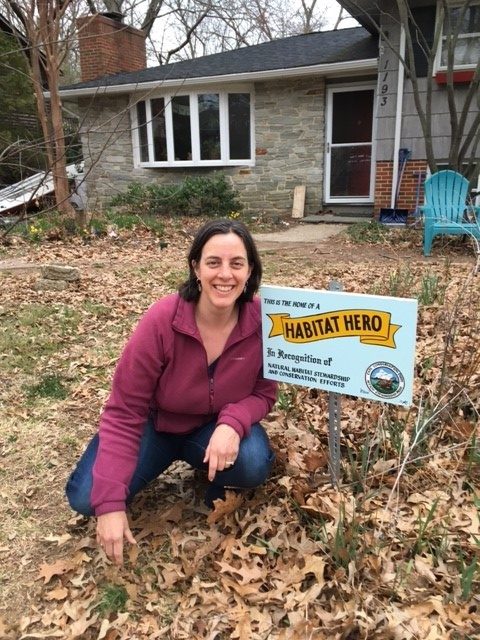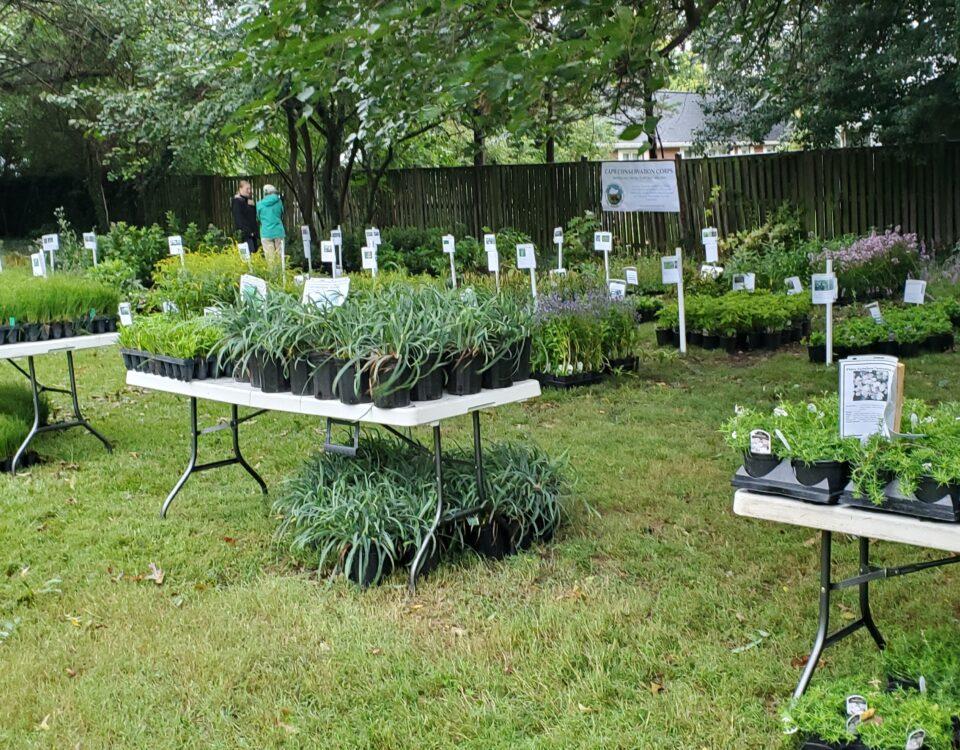
Habitat Hero – March 2019
March 20, 2019Monarchs: Inside or Out?
May 8, 2019“Slow it Down, Spread it Out, Soak it In”
By Stacey Wildberger
In the Cape Conservation Corps stated vision for our community we envision the elimination of “destructive storm water runoff and erosion from properties”. One of the tools to accomplish this goal is Rain Gardens. By controlling storm water we can improve the health of our local waterways by “slowing it down, spreading it out and soaking it in” –which is what a rain garden does. The purpose of a rain garden is to reduce storm water runoff, remove pollutants, create pollinator habitat and offer an attractive landscape feature.
What is a rain garden? It is a shallow depression in the landscape that collects runoff from rooftops, driveways, and the yard. A rain garden is graded as a shallow depression as opposed to a typical landscaped area that is raised several inches. A simple explanation is that it is a sunken garden filled with plants that are adapted to wet conditions.
A primary component of a rain garden is a filter bed, which allows the runoff to soak into the ground slowly and spread it out. The filter can be assembled on site as a mixture of sand, soil, and organic material topped with mulch and heavily planted with native, moisture-loving plants. It can also use the existing on-site soil if it percolates properly.
The plants in the rain garden should be able to withstand very wet to sometimes dry conditions because during a storm, rain water will collect 4-12” above the mulch layer before it filters into the soil (typically in 1-2 days). During times of drought it can become drier. The plants inside the rain garden basin should be able to tolerate wet feet while plants on the outer edges or berms will be plants that do not like it that wet.
Rain gardens can range from the simple design for the home landscape to moderate design suitable for a small business with several parking spots and a larger rood surface than a residence, to a more complex rain garden for commercial and industrial buildings with larger parking lots, rooftops and other impervious surfaces.
We will talk about the simple rain garden that you may want to consider for your home landscape. The typical size for a home rain garden is 60-180 square feet in area to treat runoff from your home roof, driveway and yard areas, with a total drainage area of ¼ acre (10,000 sq. feet) or less – the size of an average Cape lot. The water will enter from gutter downspouts or as sheet flow into the rain garden. You can hire a qualified landscape designer and contractor who has had experience designing and installing rain gardens and then you, as the homeowner, can install the native plants and mulch and maintain the garden.
Any good landscape feature should have a suitable maintenance plan, especially in the early months of establishing the garden. The maintenance will decrease once the rain garden has been firmly established (within 2-3 years) but it will require a few tune ups along the way. During the first couple of months the plants will need to be watered as needed (less frequently if Mother Nature provides). You may experience about 10% failure rate of the plants so plan on replacing them as needed. During the first 6 months and periodically afterwards you will want to check and replace eroded areas, check in inlets and overflow areas for debris or leaves that may be blocking them.
In late spring you can check over the plants for damage that may have occurred over the winter, add mulch if your plants have not filled in to create their own green mulch layer. The perennials stems can also be cut back (remember we left them standing over the winter to allow our beneficial bugs a place to hide). Remember one of the benefits to a rain garden is the habitat it provides pollinators. It is important to note that those plants we left standing all winter ARE NOT DEAD they are DORMANT and they are doing their job of providing a place for insects to overwinter. Do not make the mistake of assuming they didn’t survive and rip them out. You will have just set your rain garden value back to zero. The roots that have been setting down growth under the soil will have been wasted. Plants that took 2-3 years to establish these deep roots will be replaced with new plants that will have to start all over again. You may need to edit some plants, or add additional plants but most is salvageable and just needs to be given the chance to grow when spring comes.
A few fall chores include adding to plants to increase density (the more plants the better!), prune shrubs as needed, thin (and share) excessive herbaceous plants and remove the excess (but not totally) the leaf matter. Finally, you should remove invasive weeds, dead or diseased plants, stabilize bare areas and remove any debris/trash that accumulates on an as needed and ongoing basis .
Rain gardens can not only control runoff and clean water before it re-enters the waterways but it can provided a beautiful landscape feature that benefits pollinators by creating habitat, providing food sources, and host plants for their young. If you are considering adding a rain garden to your home landscape please visit the following website to get more detailed information.
And then email at [email protected] to nominate you and your new rain garden as the next Habitat Hero!




